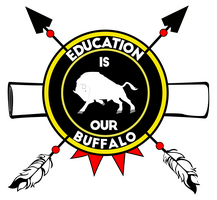When corn is to be planted by the Indians, it is the work of the women folk to see to the sorting and cleaning of the best seed. It is also the women's work to see to the planting.
After the best seed has been selected, the planter measures the corn, lays down a layer of hay, then a layer of corn. Over this corn they sprinkle warm water and cover it with another layer of hay, then bind hay about the bundle and hang it up in a spot where the warm rays of the sun can strike it.
While the corn is hanging in the sun, the ground is being prepared to receive it. Having finished the task of preparing the ground, the woman takes down her seed corn which has by this time sprouted. Then she proceeds to plant the corn.
Before she plants the first hill, she extends her hoe heavenwards and asks the Great Spirit to bless her work, that she may have a good yield. After her prayer she takes four kernels and plants one at the north, one at the south, one at the east and one at the west sides of the first hill. This is asking the Great Spirit to give summer rain and sunshine to bring forth a good crop.
For different growths of the corn, the women have an interpretation as to the character of the one who planted it.
1st... Where the corn grows in straight rows and the cob is full of kernels to the end, this signifies that the planter of this corn is of an exemplary character, and is very truthful and thoughtful.
2nd... If the rows on the ears of corn are irregular and broken, the planter is considered careless and unthoughtful. Also disorderly and slovenly about her house and person.
3rd... When an ear of corn bears a few scattering kernels with spaces producing no corn, it is said that is a good sign that the planter will live to a ripe old age. So old will they be that like the corn, their teeth will be few and far between.
4th... When a stalk bears a great many nubbins, or small ears growing around the large one, it is a sign that the planter is from a large and respectable family.
After the corn is gathered, it is boiled into sweet corn and made into hominy; parched and mixed with buffalo tallow and rolled into round balls, and used at feasts, or carried by the warriors on the warpath as food.
When there has been a good crop of corn, an ear is always tied at the top of the medicine pole of the sun dance, in thanks to the Great Spirit for his goodness to them in sending a bountiful crop.
Go Back To: Sioux Nation
